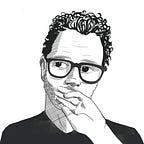16 Things I Know About Visual Storytelling
3 min readFeb 8, 2021
A non-exclusive list for filmmakers, graphic novelists and other sequential artists.
- The first ever screenplay was a list. Film, video, TV and comics are all sequential art: images arranged in a specific order across time or space. Superior to all the other decisions a storyteller makes is the sequencing of the images.
- Show one thing at a time. Image sequences are similar to sentences in that you can only say one word at a time. Beginners struggle because they don’t realise they are presenting too much information at once.
- Clarity first. The priority with every image is precision. Can your audience tell what this is supposed to be an image of? Is the image saying what you want it to say? The only way to know for certain is to test it with others.
- Efficiency second. If you are unsure about a sequence of images, a good question is ‘what is the fewest number of images needed to convey this idea?’ This is a good rule of thumb for words also.
- The job description: making the invisible visible. Telling visual stories is about translating abstract, general concepts into specific, tangible objects which can be seen by the human eye.
- Juxtaposition is the engine of visual storytelling.
- There are things the audience is consciously aware of and things that happen subconsciously. In between is the Threshold of Awareness. Learning what goes above and below this line has made me a better storyteller.
- The subtext belongs to you. You don’t always get complete control over what the audience knows or thinks while watching your story, but as the filmmaker you do get to influence how they feel.
- Composition is subtext. The arrangements of shapes and colours really do impact emotions. Horizontal lines make us feel safe, diagonals make us feel anxious.
- Every shot should be a close up. Even wide shots should be directing the audience’s eye to something.
- There’s a difference between illustration and visualisation. The former is using images to repeat what the words are saying. The latter is using the words and pictures together to make the point in a way neither could do independently.
- Show and then tell. The “then” is really important. Wherever possible, try to convey the idea visually first and then use words to fill in the missing information.
- It’s worth learning about semiotics. Thinking of images as signs really levels up what they can do for you.
- Film is a musical medium. It is a medium of rhythm and tempo. Stories rise and fall like a symphony, with allegro and lente movements. Ideally you don’t want the same BPM throughout.
- If your story is a piece of music, the words and pictures are dancing to it. Scott McCloud’s metaphor of words and pictures in a tango is perfect. They are both dancing together, but only one can lead.
- Finally, don’t make creative decisions because you think it will make your film or comic more “interesting”. As David Mamet says: “It is not your job to be interesting. It is the story’s job to be interesting; it’s your job to tell the story.”
An edited version of this essay first appeared in The Third Something, a free newsletter about visual storytelling. Subscribe!
